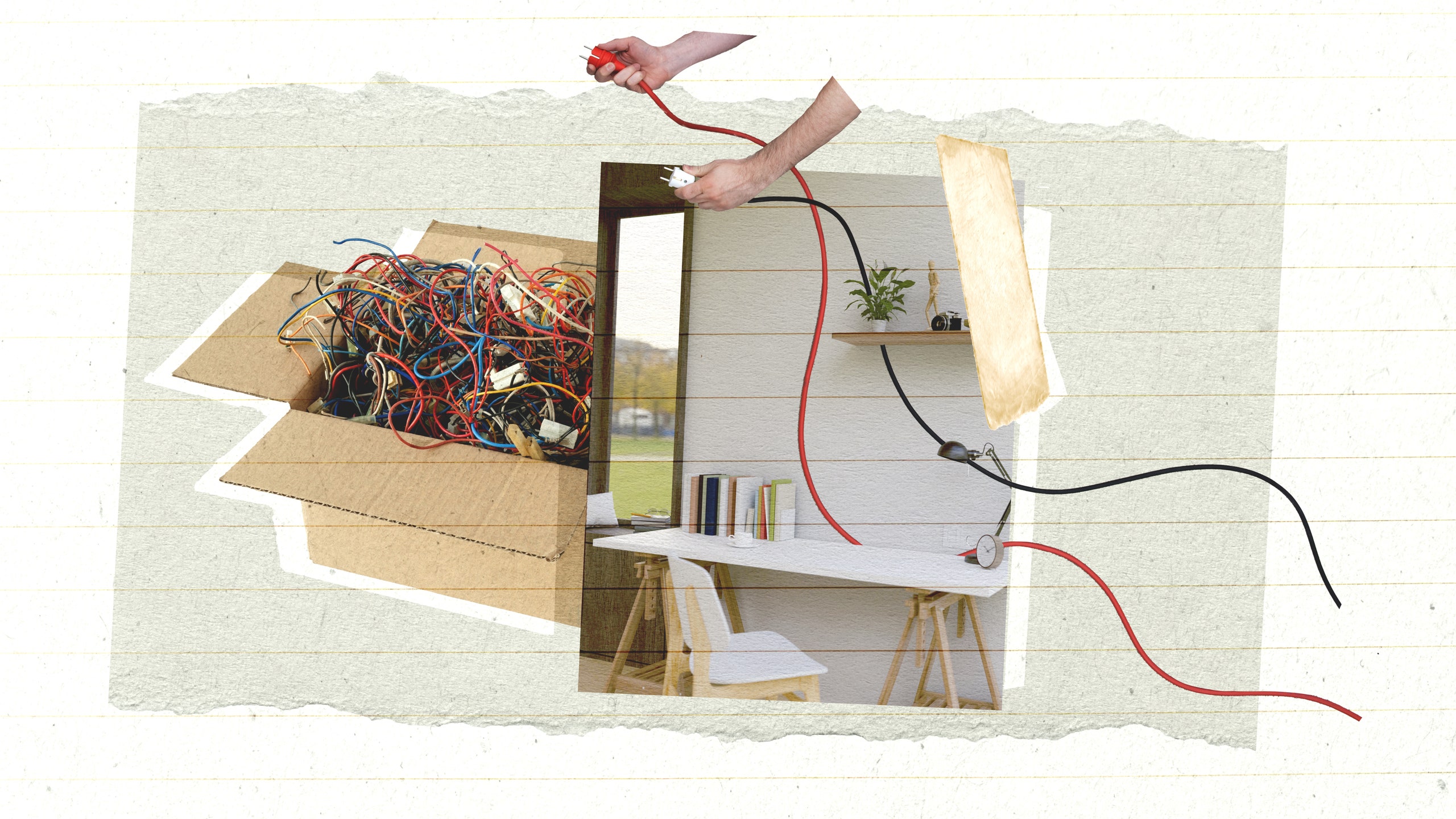It’s a paradox of the modern age: We have amazing devices that are supposed to free us from the mundane tangles of life, yet they leave us more tangled up than ever before—literally. Yes, we’re talking about cords: the cords that let us go mobile, work remotely, and do everything supposedly wirelessly yet leave us increasingly tethered to our electrical outlets. And the worst is how that dependence makes us feel like we can never throw old cords away, and even our most hardcore decluttering sessions somehow still leave us with a secret box filled with cords that have become obsolete or that we don’t even remember the purpose of anymore.
So we asked two very different kinds of experts, a technology reporter and an interior designer, how to finally cut the cords: Which cords do we really need to keep, which can we throw away, and how do we detangle what we can’t toss out?
Keep as many of these cords as you can
According to technology reporter Paul Wagenseil, these are worth keeping in cord storage. In fact, keep as many of these as you can: HDMI cables (“These have become the USB cables of video and audio…. HDMI cables will stay useful for at least a couple more decades”); USB-C cables (“the standard power and data port on Android phones and Mac laptops and many PC laptops and Chromebooks”); Lightning cables; optical audio cables (“technically called a TOSLINK cable”); and power cables for computers and other important devices.
Keep just a few of these cords
And it’s a good idea to keep a few of these around, according to Wagenseil: USB-A to USB-Micro cables. “This was the standard Android power/data plug for several years, and tons of older peripheral devices like headphones, Bluetooth speakers, and other USB-powered devices still use them.” Hold onto a few Ethernet cables as well; Wagenseil says, “You’ll need this to connect a router to a modem, or a router to a desktop computer that doesn’t have Wi-Fi. Many laptops still have Ethernet connectors in case they’re someplace with no Wi-Fi. Technically called an RJ-45 cable.”
Only keep these Cords if you really need them
Only keep the following if you really need them: USB-A to USB-B (like for an old printer); USB-A to USB-Mini (if you’re still using cameras from the early 2000s); and component and composite video cables (the old “RCA” plugs for VCRs, old DVD players, and 1990s gaming consoles).
Is it okay to keep a mystery cord box?
The rest you can probably safely toss, Wagenseil says, though North Carolina interior designer Heather LaBoda adds the caveat that you shouldn’t beat yourself up about that secret box of mystery cord storage you have in the garage—as long as you keep it from getting wet, of course.
“You never know what you might need down the road,” she says. “If you know what it is and no longer use it, go ahead and throw it away. If you’re not sure, it’s best to have a box for miscellaneous cords tucked away in your closet just in case.”
How to Reduce Cord Clutter
As for cord clutter, Wagenseil says it can make a big difference to use simple plastic zip ties to bundle them together out of sight (or you can pay a little more for Velcro ties, which you won’t have to cut off to rearrange cords).
For commercial clients, LaBoda sometimes uses wire-management baskets mounted to the underside of desks that route cords through a grommet in the work surface. For residential settings that don’t have to work around desktop computers, she usually finds that a combination of clear wire-management clips, Velcro or twisty ties, and cable covers is enough, though “using a weighted cord holder on your desktop helps keep cords like phone charges neat and accessible.” She’s also a fan of the slim, elegantly designed Samsung Frame TV if minimizing cord clutter is a priority.
